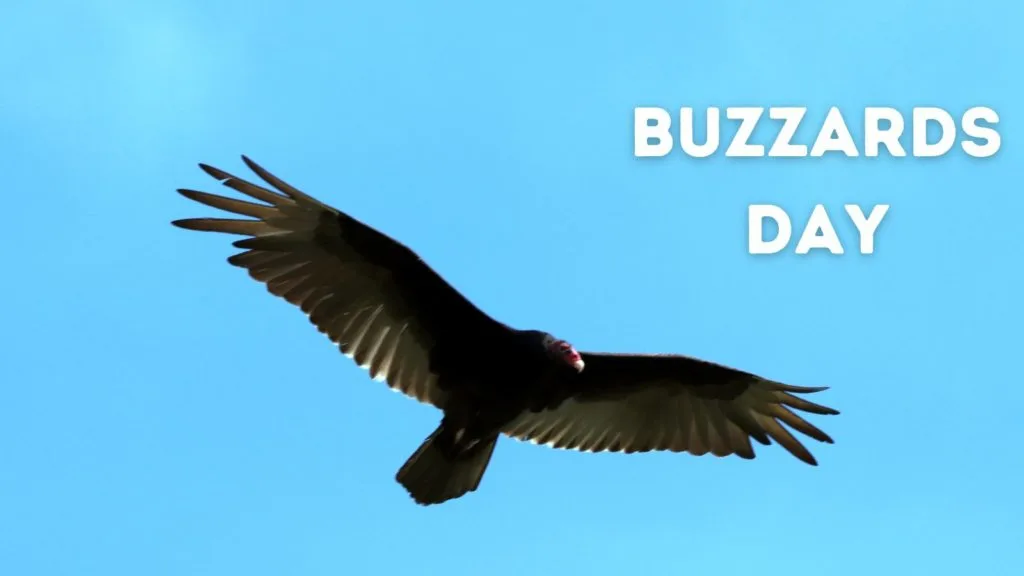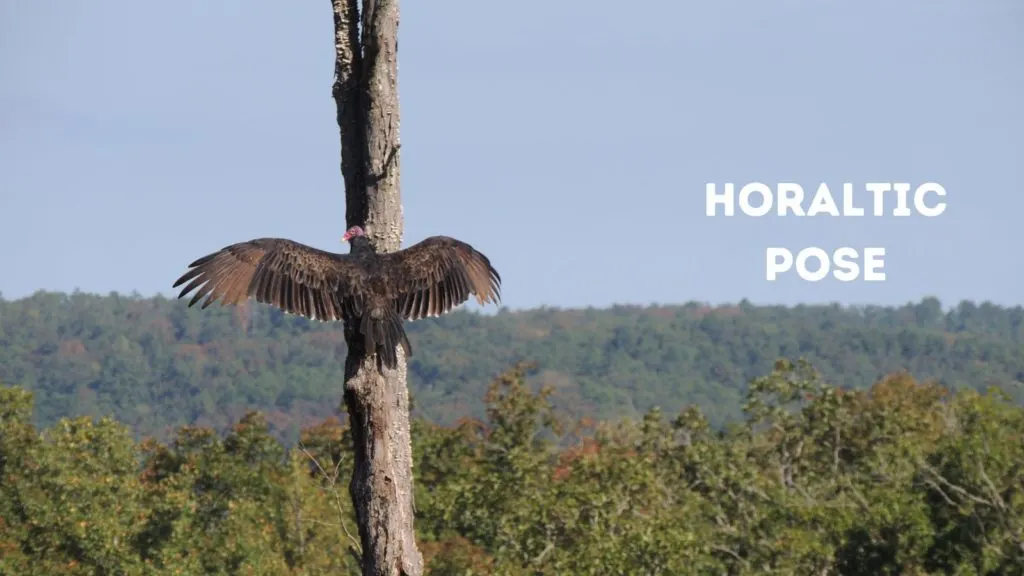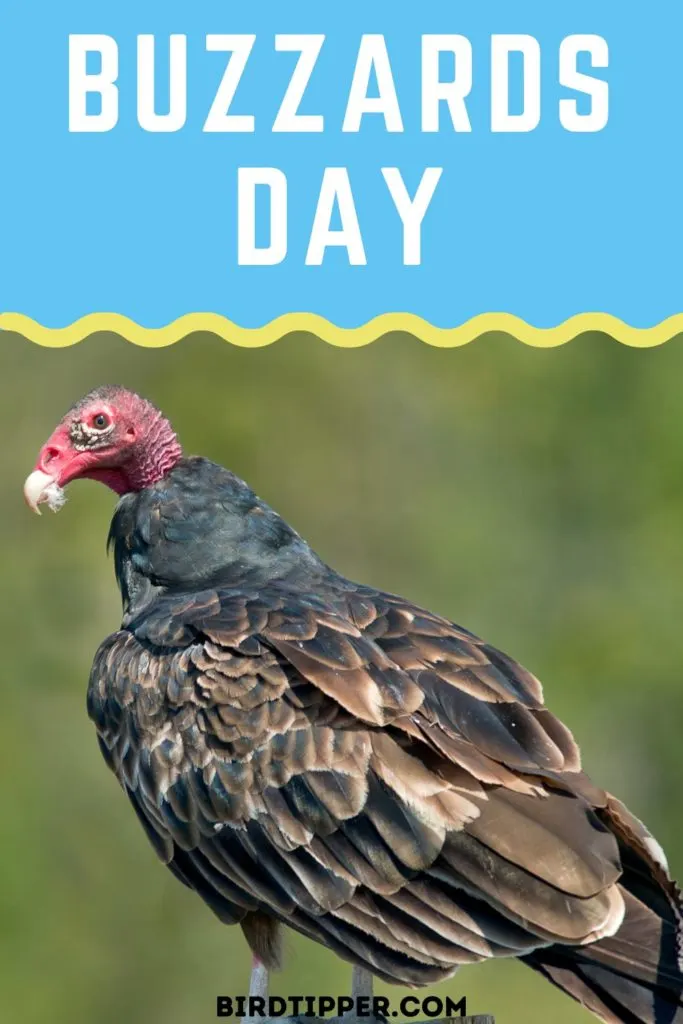Every year, Ohio residents flock to the Cleveland area to celebrate Buzzards Day, a day to respect the birds that return here in the spring migration. Wherever you might be located, however, this day is a good time to reflect on these birds that play such an important role in our ecosystem.

When is Buzzards Day?
Buzzards Day is celebrated every year on March 15.
This unique bird holiday in Hinckley Township, Ohio dates back to 1957. Every year at the Buzzard Roost, located at intersection of State Road and West Drive in the Hinckley Reservation, the Cleveland Metroparks “official buzzard spotter” watches for the return of the turkey vultures–commonly called buzzards–from their migration. The event is celebrated with a pancake breakfast, vendors and activities.
Why are there so many buzzards in Hinckley?
The legend of the Hinckley buzzards is that the birds began to come to this portion of Ohio after the Great Hunt of 1818. Many say the massive slaughter of wildlife drew the scavenging birds to the area which they have called home ever since.
Buzzards or Turkey Vultures?
In North America, turkey vultures are commonly called Buzzards or Turkey Buzzards. In the Old World, the term “buzzard” refers to members of the Buteo genus, birds that in North America would be termed hawks.
The turkey vulture summers as far north as into Canada and permanently ranges the southern United States. It is a common sight along roadsides and soaring on thermal updrafts. These common carrion eaters are natural scavengers, and highly useful ones, often more than 30 inches long and with great wingspan.
“What a lovely child of God it is, soarin’ up there,” said Fr. Hogan in the novel Children of Hunger. And he added, “Of course, down on the ground it’s a buzzard. Lots of things in the world seem to be like that.”
Interesting Facts About Turkey Vultures

- You may see turkey vultures doing what is called a horaltic pose in the morning sunlight, standing with their wings outstretched. This helps warm the bird in the morning sun and may also reduce parasites and bacteria–a bit like hanging our laundry out in the sun to get that fresh smell!
- Turkey vultures raise two chicks per year.
- The scientific name of the turkey vulture is Cathartes aura, which means the Cleansing Wind.
- The featherless head of the Turkey Vulture helps reduce the bacteria these birds pick up when dining.
- Turkey vultures pee on their own legs. This process, known as urohydrosis, helps cool the birds and may also help reduce bacteria on the legs and feet.
- Due to a lack of a voice box, these birds have few vocalizations, limited to only grunts and hisses.
- They have excellent eyesight and can spot a carcass from great heights.
- Turkey vultures have a keen sense of smell and can often find food that other scavengers have missed.
- The birds are attracted to the scent of rotting flesh; other carnivorous birds like condors that lack the turkey vulture’s sense of smell will follow these birds to a food source.
- Turkey vultures play an important role in the ecosystem by helping to clean up carcasses and prevent the spread of disease.
- Turkey vultures don’t become sick after eating animals that died of disease because of their strong stomach acids.
Pin it to remember

- Can Hummingbirds Predict Hurricanes? - May 11, 2024
- Can Grackles Be Dangerous to Your Dog? - October 13, 2022
- How to Make Eggshell Calcium for Birds - September 25, 2022
